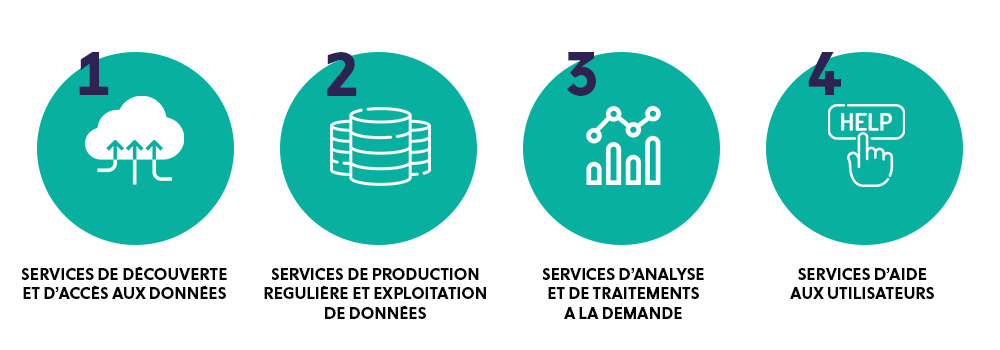
Accès aux données et service des sciences du Système Terre
Data Terra propose plusieurs moyens d’accéder aux données et services des sciences du système Terre via :
- Cinq portails d’entrée correspondant aux pôles thématiques :
– AERIS (atmosphère)
– FormaTerre (Terre solide)
– ODATIS (océan)
– THEIA (surfaces continentales)
– PNDB (biodiversité, à partir de 2024) - L’entrepôt de données longue traîne Easy Data
- Trois dispositifs :
– DINAMIS qui donne accès à des Images satellites très haute résolution
– ART qui permet de créer des synergies pour les territoires autour des données scientifiques Systeme Terre
– INTER-PÔLES pour faciliter les échanges entre les scientifiques et les directions techniques des organismes de recherche








